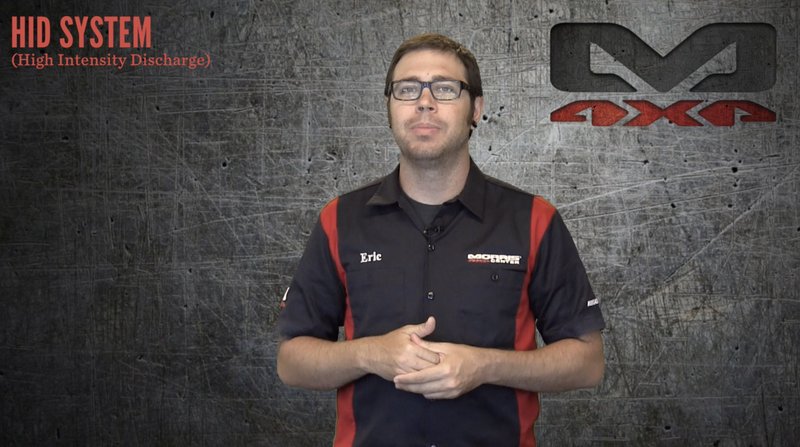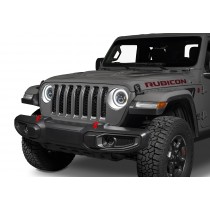Choosing the right lighting for your Jeep or truck can be daunting at times. There are so many choices and brands, and types of lighting to use. The last thing you want to do it blow all your hard earned cash on various lights, and be disappointed when they don’t do what you wanted.
Choosing the right lighting for your Jeep or truck can be daunting at times. There are so many choices and brands, and types of lighting to use. The last thing you want to do it blow all your hard earned cash on various lights, and be disappointed when they don’t do what you wanted.
Eric breaks down the basics so you can get a good idea of what kind of lights might work best for you. Plus, it will probably save you some money in the long run by getting the right type of lights the first time, for that perfect rig setup.
Lights on a Jeep have many uses, and Jeep fans know them all. The headlights are the obvious ones, and often, the first to be replaced. Stock headlights are usually a traditional halogen bulb, which has a yellowish tint to it, rather than white. They fulfill the government’s regulations for lighting on a new vehicle but don’t go much beyond that. Jeep owners prefer to swap those out for better visibility.
Fog lights are normally mounted low. They are designed to spread light just in front of the vehicle but off to the sides too in a wide pattern. By keeping the lighting low, this prevents it from shining up to high and reflecting off the fog or dust back into your eyes and the windshield. While there are plenty of aftermarket fog lights that we carry, many of them drop right into the stock factory location, making it easy to upgrade your lighting. Most replacements are modern LED lights. (Halogen wouldn’t be much of an improvement, so there’s little incentive to make them aftermarket. LED is the way to go).
When you see a Jeep, you’ll often see lights facing forward for driving, added fog lights or cube lights, spotlights, light bars, side lighting, and even lighting facing out the rear. When you trail a lot, or fish and go camping, your Jeep is the host to light the way. We’re not sure you can ever have enough lighting deep in the middle of nowhere. But at the same time, you can be practical about which lights to use, and knowing the differences, and having a plan, can save you hassle and money.
There are three choices for a beam pattern in the lights you’re looking for:
Fog Pattern
Driving Pattern
Spot Pattern
Commbo Patterns (which are lights that can combine multiple pattersn)
The Fog Pattern shines low and wide but close to the front of the vehicle, not very far out.
The Driving Pattern shines out in front, similar to a headlight, with a wide beam.
The Spot Pattern will throw out a fine narrow beam far ahead of your Jeep. This allows you to see out front in the distance for any obstacles or hazards coming up. These are especially important for trailing, or anywhere it might be pitch black out and you need to see what’s ahead. That includes a long stretch of empty highway.
There are three types of bulbs commonly used on today's vehicles:
Halogen
HID (High-Intensity Discharge)
LED (Light Emitting Diode
Halogen lights have been around a few decades. But it’s not so much the bulb doing the work, it’s the concave reflector behind it. This means you’re getting a light pattern that’s all over the place, and it’s not especially bright. It doesn’t even shine out very far. It’s ok for normal driving maybe, but not very useful offroad, or when you need to see at a distance.
HID lights can be expensive (more than Halogens or LEDS). They are a complicated electrical lighting system. Almost like fluorescent light, they use a ballast to ramp up the power to a bulb with a tungsten filament and are filled with Zeon gas. They are very bright and energy efficient. The downside is they generate a lot of heat. They used to be more common, but with recent developments in new LED technology, they’re not as popular. (more than one driver has melted their plastic headlight assemblies over the years using cheap no name HID kits).
LED lights generate less heat, and run cooler. When used in auxiliary lighting, they tend to be more focused, depending on their intended use. This means you get more light exactly where you need it. They are a solid state light bulb, which is soldered directly to a circuit board. LED bulbs are small, but don’t be deceived by their size. They put out a lot of light (more than Halogen and HIDs) The lenses of the lights that use LED bulbs typically have a specific pattern or focus to them so you will get the most from your LED light.
No matter where you mount the lights, or what their intended purpose is, by knowing the differences, you’ll be getting the type of light you need for the various locations on your Jeep or truck. You can mix and match of course, but this way, you’ll be much more satisfied with the choices you make for new lighting.
We carry lighting products from dozens of manufacturers here at the Morris 4x4 Center. Some of the top brands are:
and that's just to name a few.
So check them out! We have the lights you want to set your Jeep up right the first time.






